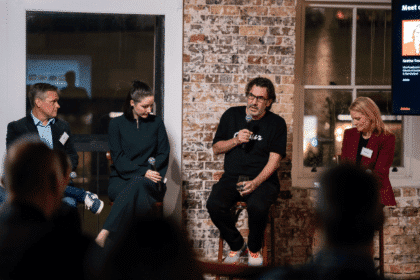How do you secure new customers? For marketing professionals, this is likely the biggest challenge they face on a daily basis, writes Sarah Pike, chief marketing officer at customer acquisitions company Salmat.
The trouble with growing a customer base is that the process is two-fold; first you need to find the right target and work out how to communicate with them, and secondly you need to actually convert them into paying customers.
The bright minds at Salmat have done the hard work and have come up with some nifty tips and tricks for reaching new customers and converting them from shy to buy.
Reaching your audience
The hardest part of identifying a target audience is knowing where to start looking. Marketers often try to be everything to everyone when in reality not everyone will be interested in what you’re selling.
With what feels like thousands of marketing channels at your fingertips, it’s worth remembering that chances are your customers are only using a select few. Why advertise insurance on Instagram when you would be better off investing in letterbox media and search?
Think about who your audience is, what they are interested in and where they get their purchasing information from. This will allow you to focus on select channels and improve your efficiency and ROI.
In the age of the connected consumer, it has never been easier to target exactly who you want to speak to. Demographic segmenting tools like Roy Morgan’s Helix Personas, ABS data and geoTribes can be integrated into tools like Swiftplan which allow you to narrow your focus based on a range of demographic and psychographic data, greatly improving the effectiveness of your marketing.
If you aren’t sure which channels to focus your efforts on this year, the three most cost-effective and easy to implement are letterbox, search and SMS marketing. They would be a good place to start.
Letterbox media reaches around 19.7 million Australians, more than any other medium, and more than half of those have bought something in the past week after seeing it in a catalogue. Best of all, technology is allowing marketers to get even more targeted in their letterbox media distribution to minimise wastage, so why not look at how you can reach your new customers through their letterbox?
If you want a 1:11 return on investment, then you need to be looking at throwing some marketing dollars behind search. Google is by far the biggest website in the world and typically the first point of call for anyone researching a product. If your brand isn’t appearing in the top few results, you’re missing out on a massive chunk of already engaged consumers.
SMS marketing, while still fairly under-utilised, has arguably the best engagement of all channels. It’s hard to ignore when a massive 98 per cent of messages are opened and read by consumers as well as a conversion rate four times that of email. SMS marketing is cost effective, simple to set up and, best of all, delivers strong results.
Tying all your channels together is the most critical aspect of reaching new customers efficiently and cost effectively. Without an integrated and centralised means for managing the range of channels you use, it will be impossible to keep track of your communication and create content that resonates with your audience. A dashboard like FUSE will help organise all your channels in one place.
Converting your customers
While it’s incredibly important to reach out to new potential customers, if you aren’t converting them into paying customers, there really isn’t any point.
Converting your audience is a challenge many marketers struggle with, and requires different tactics to simply raising awareness of a brand or product. Around 96 per cent of visitors to your website will go there with no intention to buy anything. Luckily, at this point half the battle is won; you’ve got their attention and their interest, you just need to convince them to act on their impulses.
This is why it is critical to invest in your customer experience platform. Unfortunately, the biggest challenge marketing professionals often face is securing budget for this, as most businesses don’t provide the support to marketers to actually achieve the desired conversion rate. Just 22 per cent of businesses are currently happy with their conversion rate, yet only 19 per cent of Australian companies report having a fully integrated CX (customer experience) platform.
If your customers’ experience of your business isn’t up to standard, how can you expect them to want to purchase your products?
More than half of consumers utilise at least three or four channels to connect with a business. With that in mind, you need to have a platform in place to ensure no matter how they connect with you, that they are treated as an individual and have a uniform experience across all channels.
Often putting big bucks behind CX isn’t a viable option for a business, but that doesn’t mean you can’t improve your platform. In fact, one of the simplest and most cost effective ways to set up a solid CX platform is to outsource it.
Outsourcing can reduce your operating expenditure by 10-25 per cent and provides you with an agile platform that can be scaled up or down depending on needs, such as a peak period like Christmas for retailers.
It also means you don’t need to worry about keeping your CX up to date with the latest technology. Everything will be adapted to multiple platforms which is increasingly important now with more people shopping on their phones and tablets. Best of all it’s always on and automated; advances in virtual agent technology are allowing business to reduce their average call time by 50-60 seconds.
Converting customers comes down to treating them as an individual and making it as simple as possible for them to deal with your business. If it’s too difficult, they will go somewhere else.
Whether reaching, or converting, customers is what keeps you up at night, the good people at Salmat have developed a website jam-packed with the latest thinking to school, inspire and help you make a start in 2016.








